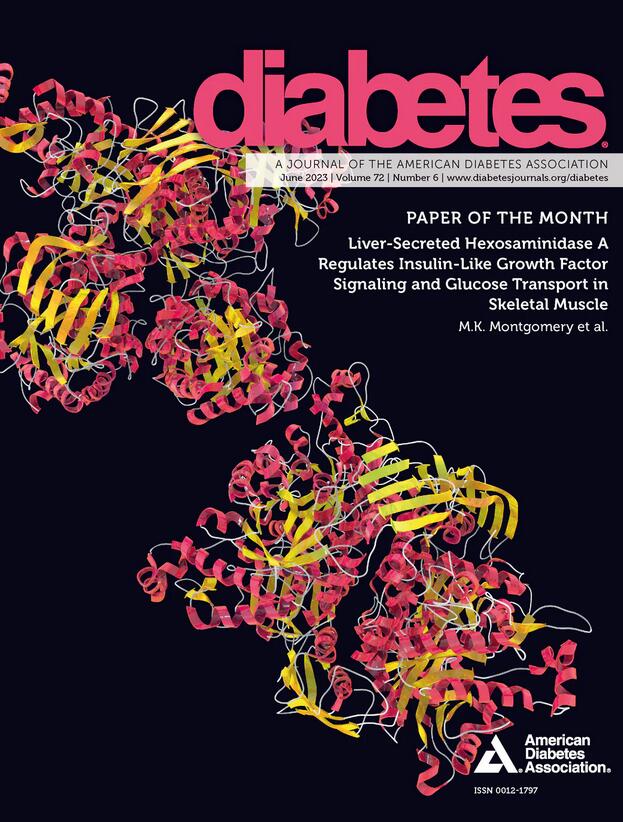肌细胞内脂质过剩不会影响小鼠或代谢异常肥胖症患者肌肉纤维的生物物理特性
IF 6.2
1区 医学
Q1 ENDOCRINOLOGY & METABOLISM
引用次数: 0
摘要
观察性研究显示,在 "代谢异常 "肥胖症患者中,细胞内脂质(IMCL)含量与肌肉力量和收缩功能之间存在相关性。然而,这种关联缺乏明确的生理机制,因果关系也存在争议。我们将免疫荧光共聚焦成像与对代谢正常和代谢异常小鼠以及代谢正常(定义为空腹血浆葡萄糖和葡萄糖耐量正常)和代谢异常(定义为糖尿病前期和 2 型糖尿病)超重/肥胖症患者的通透性肌纤维的力测量相结合,评估肌细胞脂滴特征(脂滴大小和密度)与生物物理(主动收缩和被动粘弹性)特性之间的关系。脂滴参数的纤维类型特异性在代谢异常和正常小鼠之间以及代谢正常和代谢异常人群之间存在差异。然而,尽管代谢异常组的 IMCL 数量相当大,但代谢异常组与对照组的小鼠或人在峰值主动张力或被动粘弹性方面没有显著差异。此外,IMCL 参数与生物物理变量之间也没有明显的关系。因此,我们得出结论,IMCL 的积累本身不会影响肌肉纤维的生物物理特性,也不会阻碍收缩。本文章由计算机程序翻译,如有差异,请以英文原文为准。
Excess Intramyocellular Lipid Does Not Affect Muscle Fiber Biophysical Properties in Mice or People with Metabolically Abnormal Obesity
Observational studies show correlations between intramyocellular lipid (IMCL) content and muscle strength and contractile function in people with “metabolically abnormal” obesity. However, a clear physiologic mechanism for this association is lacking and causation is debated. We combined immunofluorescent confocal imaging with force measurements on permeabilized muscle fibers from metabolically normal and metabolically abnormal mice and metabolically normal (defined as normal fasting plasma glucose and glucose tolerance) and metabolically abnormal (defined as pre-diabetes and type 2 diabetes) people with overweight/obesity to evaluate relationships among myocellular lipid droplet characteristics (droplet size and density) and biophysical (active contractile and passive viscoelastic) properties. The fiber type specificity of lipid droplet parameters varied between metabolically abnormal and normal mice and among metabolically normal and metabolically abnormal people. However, despite considerable quantities of IMCL in the metabolically abnormal groups, there were no significant differences in peak active tension or passive viscoelasticity between the metabolically abnormal groups and the control group in mice or people. Additionally, there were no significant relationships among IMCL parameters and biophysical variables. Thus, we conclude that IMCL accumulation per se does not impact muscle fiber biophysical properties or physically impede contraction.
求助全文
通过发布文献求助,成功后即可免费获取论文全文。
去求助
来源期刊

Diabetes
医学-内分泌学与代谢
CiteScore
12.50
自引率
2.60%
发文量
1968
审稿时长
1 months
期刊介绍:
Diabetes is a scientific journal that publishes original research exploring the physiological and pathophysiological aspects of diabetes mellitus. We encourage submissions of manuscripts pertaining to laboratory, animal, or human research, covering a wide range of topics. Our primary focus is on investigative reports investigating various aspects such as the development and progression of diabetes, along with its associated complications. We also welcome studies delving into normal and pathological pancreatic islet function and intermediary metabolism, as well as exploring the mechanisms of drug and hormone action from a pharmacological perspective. Additionally, we encourage submissions that delve into the biochemical and molecular aspects of both normal and abnormal biological processes.
However, it is important to note that we do not publish studies relating to diabetes education or the application of accepted therapeutic and diagnostic approaches to patients with diabetes mellitus. Our aim is to provide a platform for research that contributes to advancing our understanding of the underlying mechanisms and processes of diabetes.
 求助内容:
求助内容: 应助结果提醒方式:
应助结果提醒方式:


